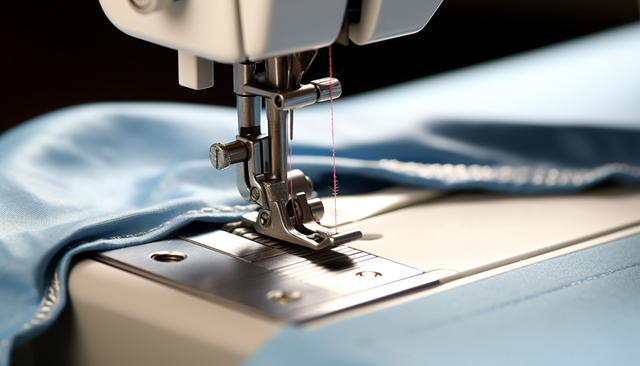Month: September 2024
Empowering the Fashion Industry with Financing Solutions

Across a range of industries, Credebt® continues to look for exciting companies to partner with and assist with financing solutions. Currently, we are working with a fashion company that imports fabrics and cotton to manufacture a wide range of stylish, high-quality women’s clothing ranging from casual sportswear to elegant office attire. We are helping them to facilitate trade transactions with their suppliers to meet the changing consumer preferences and demands. From this experience, we have added to our knowledge of the fashion industry that stems back to 2015 when we began financing uniforms for Ireland’s armed forces. From this potential originator, we learnt how they cater to their customers’ fashion desires.
The fashion industry has undergone a remarkable evolution over the years, and even more so since Credebt® began financing this sector 10 years ago, adapting to changing trends and technologies. The sector encompasses various aspects such as design, manufacturing, marketing and retail. It dictates consumer’s clothing choices and mirrors societal values, cultural trends and economic dynamics. With a vast network of designers, stylists, models, photographers and retailers, the industry thrives on innovation, creativity and continual advancement. This fast-paced environment requires a keen eye for trends, exceptional attention to detail and a profound understanding of consumer behaviour. From luxury to affordable fashion, the industry caters to a diverse range of consumer preferences and budgets while setting new standards of style and sophistication. It is a realm where creativity intersects with commerce and where individual expression merges with global influences to shape the way we present ourselves to the world.
The supply chain of the fashion industry is an intricate network that spans across the globe, connecting manufacturers, suppliers and retailers. Some of the top manufacturers in the fashion industry are in countries like China, Bangladesh, Vietnam and India, where production costs are relatively lower. These manufacturers source raw materials from various parts of the world, such as cotton from the United States and Greece and silk from China and India. Once the materials are sourced, the manufacturing process begins, involving a series of steps including cutting, sewing and finishing. The finished goods are then transported to distribution centres or directly to retailers through a complex supply chain of logistics providers. This system enables the fashion industry to deliver trendy and fast-changing products to consumers worldwide in a timely manner. Each step in the supply chain plays a crucial role in ensuring efficiency and quality in the production and distribution of fashion goods.
Looking ahead, the future of the fashion industry is likely to be shaped by trends towards sustainability, inclusivity and technological innovation. Sustainable fashion, which focuses on minimising environmental impact and promoting ethical production practises, is gaining traction among consumers and industry leaders alike. Technological innovations such as 3D printing, virtual reality and artificial intelligence are also transforming the way fashion is designed, produced and marketed. These technologies are not only making the industry more efficient and cost-effective but also opening new possibilities for creativity and customisation. Inclusivity and diversity are becoming increasingly important in the fashion industry, with calls for greater representation of different body types, ethnicities and backgrounds in campaigns and on the runway. The industry is gradually moving towards a more inclusive and diverse future, reflecting the diversity of the global population.
Financing will continue to play a crucial role in the fashion industry, as it enables designers to turn their creative vision into reality. From sourcing high-quality materials to manufacturing garments and marketing their brand, every aspect of the fashion business requires finance. Without adequate financing, designers may struggle to produce their collections, reach their target market and ultimately grow their brand. Credebt® offers financing solutions to fashion businesses striving to unlock new opportunities for growth and innovation in an increasingly competitive industry.
More Posts Like This
Unlocking Cash Flow for Expansion in Irelandâs Food and Catering Industry
From Harvest to Market: Financing the Future of the Sugar Trade
The Versatility of Cashew

For more than a year, we have been working with companies exporting cashew nuts. One particular company buys raw cashew nuts from farmers in Ghana and Côte d’Ivoire and exports them to India. They have been trading with one of their customers for three years and would like to extend credit terms to them so they can increase the quantity of cashews they import. We are working to provide the best finance solution that will allow our client to support their customer’s requirements and expand their business.
The cashew trade plays a significant role in the global economy with cashew nuts being one of the most sought-after commodities in the world market and is dominated by countries like Vietnam, India, Cote d’Ivoire and Brazil. Europe is the largest consumer of cashews importing 40.00% led by Germany and the United Kingdom followed by the United States which makes up 28.00% of the market.
Cashew nuts are kidney-shaped seeds found on the bottom of the pseudocarp or ‘false fruit’ called the cashew apple. The cashew shell contains a caustic phenolic resin that is harmful to humans. The resin is known under the name cashew nut shell liquid or CNSL and has widespread industrial uses.
The cashew plant and nut are valuable resources in multiple sectors from food production to industrial manufacturing. Derivatives of the cashew plant include raw cashew nuts, cashew nut shell liquid, cashew kernel, cashew juice, nut oil, shell powder, butter, flour and cashew nut peel. Roasted or salted cashews are popular as snacks and in butter, cakes and cookies as well as various dishes from stir-fries to salads. Cashew oil is used for cooking and salad dressing while cashew fruit can be processed into juice, fermented to make alcoholic beverages like feni in India or even used in smoothies. Cashew fruit can also be made into jams and preserves due to its sweet and tangy flavour.
The cashew plant has several industrial uses. Cashew nut shell liquid is used in the production of paints, varnishes and coatings due to its binding and protective qualities and is used in the production of certain adhesives, rubber and industrial resins. It is also used in the manufacture of brake linings and clutch facings in vehicles and as an ingredient in insecticides and fungicides. Cashew oil and extracts are used in cosmetics for moisturising, anti-ageing products due to their high vitamin E content and in hair products for their nourishing and strengthening properties.
One of the most significant benefits of cashew trade is its potential to boost economic growth in countries that produce and export cashews. Cashew farming provides a source of income for farmers in developing countries helping to alleviate poverty and improve living standards. Additionally, the cashew trade stimulates local economies by creating jobs along the supply chain from farming to processing and distribution.
The versatile cashew plant offers a wide range of applications. The future of the cashew trade remains promising and is likely to be shaped by a mix of demand growth, technological innovation, sustainability efforts and geopolitical shifts with Africa playing an increasingly central role in both production and processing.
